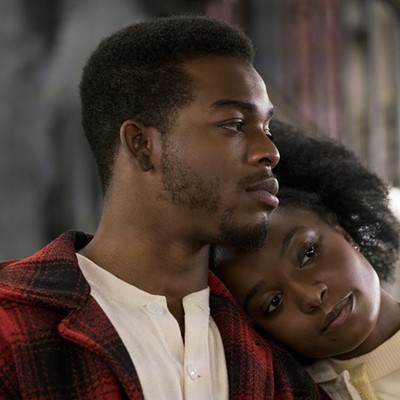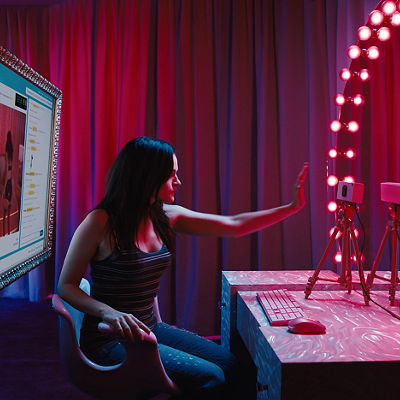A grave has been freshly dug in the opening shot of director Gareth Evans's ultra-violent Indonesian flick The Raid 2. It's a start, but Evans is going to need 400 more.
In the first few minutes, Evans dispenses with three-quarters of the survivors of 2012's The Raid: Redemption, the writer-director's brutal mini-epic about a police mission gone wrong, leaving only good-hearted, fleet-fisted husband and father Rama (Iko Uwais) to solve corruption in Jakarta (population 9.6 million, about half of whom the Raid movies estimate are evil). The city is ruled by two family heads: Bangun (Tio Pakusadewo) and Goto (Ken'ichi Endo), gentleman gangsters who have maintained a decade-long truce. But corrupt cops and upstart mobster Bejo (Alex Abbad), a slithery goon with leather gloves, want bigger pieces of the market. And Rama, secretly embedded as the right-hand man to Bangun's prissy son Uco (Arifin Putra, a clone of young Elvis), is fine killing everyone if it means he can safely return home.
"This is a question of ambition, really," says Bejo. Which is also true for 33-year-old Evans, a Welshman who moved to Indonesia to shoot a documentary on the native martial art pencak silat — good for maiming enemies with knives, sticks, and kicks — and wound up jump-starting the country's dormant action-film industry and creating international proto-stars from athletes who just five years ago were anonymous deliverymen and silat instructors.
This sequel is bigger and bloodier than its predecessor, which is no easy feat. People kill each other with broomsticks, hammers, and baseball bats in restaurants, prison bathrooms, and nightclubs. Five men get their necks sliced with box-cutters for no reason I could fathom, even after the second watch that's probably mandatory for anyone trying to figure out who's murdering whom and why. The plot is as gratuitous as the violence. At 148 minutes, it feels both rushed and endless, so laden with double-dealing and intrigue that Evans can't even pause to give characters names. One of the climatic fights is between Rama and, uh, That Guy Who Uses Hooked Knives.
Uwais's Rama is a blue-collar hero, Bruce Lee by way of Bruce Springsteen. He fights in cargo pants and knockoff Converse sneakers, and has an abashed charisma, as though he'd rather not become Hollywood's latest trendy import. Early on, Bangun and Uco order him to strip to prove he's not wearing a wire and we get a flash of his utilitarian, almost soft stomach that makes pretty-boy vanity muscles look as foolish as a stripper with silicone triple Js. He performs amazing stunts under exacting constraints, say, battling 15 guys in a concrete box. Yet we're most impressed when Evans has him shadowbox a wall, the best way to gawk at his extraordinary speed; it's like watching a hummingbird buzzing its wings.
Like him, the raw ingredients of Raid 2 are superb. But the overall effect is gluttonous and queasy. Instead of one memorable assassin, Evans crams in three — let's call them Knife Guy, Hammer Girl, and Baseball Bat Dude — but doesn't have time to give them dialogue. He resurrects five-foot-tall fan favorite Yayan Ruhian (Mad Dog in the original) and burns through him like a match. Though the flick's best scenes are pared-down bouts — two men in a kitchen, five men in a car — Evans wrestles with (and loses to) his impulse that bigger is better, that 35 corpses are more effective than one.
Are American audiences more comfortable with mass murder if the dead don't look or talk like us? I don't know. But judging by the awkward titters and hoots in my crowd, it's a question worth asking, even if we might not like the answer. Take one massacre, in which Uco and his men machine-gun a warehouse of people over a 5,000 rupiah debt. Five thousand rupiah is 43 cents. Even if something got garbled in the subtitles, and the value was supposed to be closer to $5,000, that would still mean that in this world each human is worth just a few hundred bucks apiece. Life shouldn't be this cheap.
By the last act (after several people had fled my screening either from nausea or tedium), we've seen so much death that our eye sockets feel bruised. I'm not opposed to onscreen death. I'm opposed to pointless death. Eventually, the bloody face-offs feel as inhuman and pitiless as the contests at a cockfight. Ironically, Evans is so strong an action director that he could have shaved off 40 minutes and hundreds of victims and wound up with a more effective final cut. A more conscientious director, however, might have avoided confusing monochrome battles between men dressed in identical black, or between 60 men slathered in mud, or at least asked himself why, in the middle of a film that looks like summer, there's suddenly a fight in the snow.
Still, I doubt I'll see a better action beat all year than a pause Evan takes during a two-man battle to the death. Amid vast, vapid slaughter, these two weary warrior animals allow each other to gulp what could be their final breaths. Then they lunge again. And we understand not just the need to kill, but, almost inspiringly, the urgency of survival.






